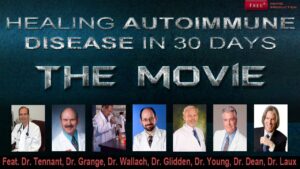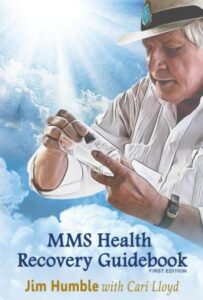How to Cure Vitiligo: Natural Vitiligo Treatment THAT WORKS For Me! See My Progress…
Vitiligo: Cause and Solution
The Only Cure For Vitiligo ( Stop Inflammation & Heal The Gut)
Vitiligo is a long term skin condition characterized by patches of the skin losing their pigment. The patches of skin affected become white and usually have sharp margins. The hair from the skin may also become white. Inside the mouth and nose may also be involved. Typically both sides of the body are affected. Often the patches begin on areas of skin that are exposed to the sun. It is more noticeable in people with dark skin.
=================================================
The Treatment That Worked For Me
The vitiligo / leukoderma treatment that worked for me resulted in roughly 98% repigmentation within about a year and a half. I have had no relapse at any stage since the process began and the new pigment has continued to become smoother and more consistent as time has gone by.
This cure (if you can call it that – I actually think that effective treatment is a more accurate term) consisted of taking the following nutritional supplements and getting regular, moderate sun exposure several times a week. I have listed the supplements on this page, in order of their perceived effectiveness, along with all their ingredients.
1. Boost
The capsules which, together with regular UV exposure, appear to be mainly responsible for my re-pigmentation are called Boost and are marketed (as a natural supplement designed to help those with normal skin to achieve a richer tan more easily when exposed to the sun) by a British manufacturer of natural health, beauty and sports nutrition products called xenca. The ingredients of this supplement, as listed on the bottle can be found below. Amounts shown are per serving (2 servings are recommended per day for 2 days prior to sun/UV exposure and thereafter until 2 days after exposure – but obviously I took them on an ongoing basis). One jar lasts a month.
- L-Tyrosine 500mg
- PABA 300mg
- Copper (as sulphate) 1mg
- Vitamin B1 (as Thiamine HCI) 5mg
- Vitamin B2 (Riboflavin) 5mg
- Vitamin B3 (Nicotinamide) 10mg
- Pantothenic Acid (as Calcium Pantothenate) 10mg
- Vitamin B6 (Pyroxidine HCI) 10mg
- Folic Acid 200mcg
- Vitamin B12 12.5mcg
- Vitamin C (Asorbic Acid) 100mg
- Vitamin D3 (Cholecalciferol) 2.5mcg
- Vitamin E 100mg
- Zinc (as Gluconate) 1.25mg
- Choline Bitartrate 30mg
- (Other ingredients: magnesium stereate, gelatin)
If you are going to give them a go, my advice would be to take them for several weeks before necessarily expecting to see visible results, although using a Woods light might show early results sooner than that. My vitiligo was very extensive and long term. I imagine the smaller and newer your lesions, the faster you might expect to see results.
_____________________________________________________
2. Five a Day +
Five a Day + (the blend of “superfoods” referred to on the My Treatments page of this site). Containing 21 nutrient-dense foods that are rich in natural enzymes, minerals, amino acids, vitamin and antioxidants, its ingredients are:
Five A Day+ Superfood : The 21 Ingredients
Alfalfa
Alfalfa is rich in minerals and vitamins and contains organic acids, free amino acids, non-protein amino acids (such as canavinine), strachydrine, coumarins, isoflavonoids, saponins and natural steroids such as b-sitosterol, campesterol, stigamsterol and others. It contains vitamins A, D, E and K as well as chlorophyll, carotene and minerals such as potassium, calcium and magnesium.
People using antibiotics such as amoxicillin, gentamicin, streptomycin and tetracycline could possibly benefit from this, as it helps to restore the level of vitamin K which is depleted when using these antibiotics, as well as cholesterol-lowering drugs, steroids and anti-seizure medication.
Apple Pectin Fibre
An indigestible, soluble fibre, apple pectin is a general intestinal regulator that is used in many medicinal preparations, especially as an anti-diarrhoea agent. Our ancestors believed the old proverb: “An apple a day keeps the doctor away”. Apples are rich in pectin, a soluble fibre, which supports healthy cholesterol levels.
Researchers at the University of California found that apple pectin also acts as an antioxidant against the damaging portion of cholesterol in the blood stream.
Apple pectin may help to maintain intestinal balance by cleansing the intestinal tract with its soluble and insoluble fibres.
Barley Grass Juice
Barley grass juice is a highly rejuvenating food for health. It is considered to be a powerful superfood and is often recommended in the fight against different cancers. It also builds blood cell count and energy, detoxifies blood, improves asthma and is taken as an aphrodisiac. (http://www.healthbanquet.com/barley-grass-green-juice.html#.UECld6OKA_c)
Beetroot Juice Powder
Raw beets are high in carbohydrates and low in fat. They contain phosphorus, sodium, magnesium, calcium, iron, and potassium, as well as fibre, vitamins A and C, niacin,
folic acid and biotin. Nutrients derived from natural sources are considered to be “better” than those found in supplements, as they are found in an organic form. Hence, the iron in beet juice is particularly noted for being much more easily assimilated than manufactured forms of iron. (http://allonhealth.com/health-products/redibeets.htm)
Brown Rice Kernel Membrane Powder
This type of rice is much more useful for health than the traditional white rice, since the largest share of nutrients is contained in the grain membrane. Brown rice is recommended by health care professionals and nutritionists as the basis for a healthy diet.
This is an excellent source of fibre and vitamin B complex. It is believed to aid digestion and there are studies working on its anti-cancer properties.
Chlorella
Chlorella is a single-celled, water-grown micro-algae. It is widely known as a powerful superfood supplement with extraordinary nutrient density and is well established in ancient culture. One of the few edible species of water-grown algae, chlorella is full of chlorophyll. It contains all of the B vitamins, vitamin C, vitamin E, beta-carotene, amino acids, magnesium, iron, trace minerals, carbohydrates and a higher amount of protein than meat (more than 50%). It also has a unique set of phytonutrients. It binds to toxins and carries them out of the body. Its high amount of protein makes it a staple supplement for many people, including those who do not eat meat. (http://www.naturalnews.com/036086_chlorella_superfood_algae.html)
Coenzyme Q10
Coenzyme Q10 (CoQ10) is a substance that is found naturally in the body and helps convert food into energy. CoQ10 is found in almost every cell in the body and is a powerful antioxidant.
Antioxidants fight damaging particles in the body known as free radicals, which damage cell membranes, tamper with DNA and even cause ‘cell death’. Scientists believe free radicals contribute to the ageing process, as well as a number of health problems, including heart disease and cancer. Antioxidants, such as CoQ10, can
neutralize free radicals and may reduce or even help prevent some of the damage they cause.
Some researchers believe that CoQ10 may help with heart-related conditions because it can improve energy production in cells, prevent blood clot formation and act as an antioxidant. (http://www.umm.edu/altmed/articles/coenzyme-q10-000295.htm#ixzz258CowafH)
Fucoxanthin
Fucoxanthin is a type of carotenoid found naturally in edible brown seaweed such as wakame (Undaria pinnatifida) and hijiki (Hijikia fusiformis), which are used widely in Asian cuisine (wakame is the seaweed used in miso soup). Fucoxanthin also occurs naturally in much smaller amounts in both red seaweed (the kind typically used in Japanese sushi rolls) and green seaweed. (http://altmedicine.about.com/od/herbsupplementguide/a/fucoxanthin.htm)
Icelandic Kelp
Kelp has been extensively used as a treatment for the thyroid, due to its high iodine content. It is an excellent source of dietary iodine; hence it is also used in treating radiation exposure to heavy metals, heart disease and in the prevention of infections.
In addition to iodine, kelp contains minerals including calcium, iron and potassium, and vitamins B1, B2 and B12. The use of kelp to treat thyroid problems has been largely superseded by synthetic medications, although it is still considered an effective way to incorporate iodine into the diet. (http://www.livestrong.com/article/96524-kelp-benefits/#ixzz258G1eueR)
Ionic Trace Minerals
Many of the trace elements once abundant in our soils have been over-farmed and washed away into water courses. Not surprisingly, in the oceans ionic trace minerals are found in their proper proportions, the same basic proportions that are found in healthy human bodies.
The human body relies on ionic minerals and trace minerals to conduct and generate billions of tiny electrical impulses. Without these impulses not a single muscle, including your heart, would be able to function. The brain would not function and the
body’s cells would not be able to use osmosis to balance water pressure and to absorb nutrients. (http://www.traceminerals.com/trace-minerals/why-you-need-ionic-minerals)
Jerusalem Artichoke Powder
The Jerusalem Artichoke is high in two essential minerals: potassium and magnesium. Potassium is a mineral that enables the heart to beat properly, acting to keep blood pressure in the healthy range and enabling muscles to contract, allowing physical mobility. Magnesium is also important for heart health and contributes to the proper function of the muscular system. (http://www.livestrong.com/article/374796-health-benefits-of-jerusalem-artichokes/)
Kamut Juice
Kamut juice provides a supply of enzymes and chlorophyll (probably the most important elements to life on Earth and very much lacking in most diets), along with vitamins, minerals and proteins, as a strong ‘alkaline’ food which assists the body’s essential life-regulating pH balance. It is thought that kamut juice stimulates the body’s natural cleansing and detoxifying processes on a cellular level, providing significant protection against cancerous threats and disease. (http://www.websites-host.com/wheat.html)
Lactobacillus Acidophilus & Bifidus
Lactobacillus acidophilus is the most commonly used probiotic, or ‘friendly’ bacteria. Many healthy bacteria live internally in the human body, such as the intestines where they protect against so called ‘bad’ bacteria that can lead to disease. They do this in a couple of ways: for example, when L. acidophilus breaks down food in the intestine several substances are formed (such as lactic acid and hydrogen peroxide) that create an unfriendly environment for bad bacteria. Probiotics are often suggested as a supplement when you take antibiotics. Antibiotics kill bacteria but don’t discriminate between ‘friendly’ and ‘unfriendly’ organisms so the balance between good and bad bacteria in the intestines can be upset. It is thought that taking probiotics helps restore the healthy balance of bacteria in the body. (http://www.umm.edu/altmed/articles/lactobacillus-acidophilus-000310.htm#ixzz258OHK1NH)
Lactobacillus Bifidus is a type of ‘friendly’ bacteria that helps maintain healthy bacteria in the large intestine, increases the acidity of the region it inhabits and makes the area inhospitable to dangerous bacteria. It prevents harmful bacteria from converting compounds known as nitrates (ingested in food or water) into nitrites, which are known to lead to cancer. Substances that destroy ‘friendly’ bacteria like Lactobacillus Bifidus are, sadly, over-the-counter drugs, birth control pills, chlorine and fluoride in tap water, environmental pollutants, mental & physical stress, chemotherapy and radiation therapy, tobacco, alcohol and simply getting older. (http://anrvitamins.com/glossary/lactob.html)
Lecithin
Lecithin is an important phospholipid needed by all living cells. It is produced within our own bodies and can be found in the major organs: the heart, the liver and the kidneys. Lecithin aids in maintaining our overall health and is utilised by every cell in our bodies. Although it is produced within our own bodies, we do not always consume enough of the foods that provide the nutrition needed to produce adequate amounts. Lecithin can be found in many foods, such as cabbage, cauliflower, garbanzo beans, soy beans, split peas, organic meat, seeds, nuts and eggs. Today’s average diet, however, does not provide enough lecithin to successfully protect cells and allow lecithin to produce its benefits. As a result, lecithin supplementation is believed to be necessary for overall health and prevention of many conditions and potential diseases. Of its many benefits, lecithin has been proven to decrease cholesterol, promote cardiovascular health, restore damaged livers and improve the brain’s memory function. (http://www.essortment.com/benefits-risks-lecithin-48939.html)
Nova Scotia Dulse
Edible seaweed like dulse, kelp and others gained attention from researchers in the 1990s when it was discovered that many Asian populations, that were notable for long lifespans and lack of chronic diseases, used sea vegetables more frequently in their diet than did westerners. Overall, dulse and other sea vegetables are notable for their high mineral and protein content, particularly iron and potassium.
Dulse has an unusually high concentration of different minerals. Minerals with the highest concentrations are copper, zinc, potassium, calcium and magnesium. One study found that dulse had potassium concentrations 34 times higher than a banana.
Fatty Acid Content: For a vegetable, dulse has an unusually large amount of poly-unsaturated fatty acids. Furthermore, it has an unusually high concentration of EPA and DHA, which are omega-3 fatty acids most commonly found in fish.
These properties have caused Nova Scotia Dulse and other seaweeds to be studied closely by cancer researchers and edible seaweed is increasingly being used as a ‘Functional Food’ in anti-carcinogenic products. (http://blog.healthkismet.com/nova-scotia-dulse-health-benefits-facts-and-m)
Royal Jelly
Royal Jelly is a very rich source of proteins and contains eight essential amino acids, important fatty acids, sugars, sterols and phosphorous compounds, as well as acetylcholine. Acetylcholine is needed to transmit nerve messages from cell to cell. Too little of this compound makes individuals prone to diseases like Alzheimer’s. It contains gamma globulin, known to stimulate the immune system and fight off infections. Royal jelly contains vitamins A, B-complex, C, D and E. It is particularly useful for its B-complex contents, including B1, B2, B6, B12, biotin, folic acid and inositol. Royal jelly is high in the B vitamin pantothenic acid, recognized for its ability to reduce stress levels. It also supplies the minerals calcium, copper, iron, phosphorous, potassium, silicon and sulphur. (http://www.pureroyaljelly.com/info.HTM)
Spirulina
One of the” kings of the superfoods” and with over 100 nutrients, spirulina, a blue-green algae, is frequently described as the most complete food source in the world, bringing a diverse coverage of health benefits. Briefly, it supplies:
·Vitamins: B1 (Thiamine), B2 (riboflavin), B3 (nicotinamide), B6 (pyridoxine), B9 (folic acid), C, D and E.
· Minerals: Potassium, calcium, iron, magnesium, sodium and zinc.
Essential fatty acids like DHA.
· Photosynthetic pigments: chlorophyll, beta-carotene (64 to 70 times more than spinach).
Spirulina protein contains all essential amino acids, compared to the proteins of meat, milk or eggs and vegetarians can use this supplement for adding additional quality protein to their diet. (http://healthbenefitsofspirulina.com/)
Super Oxide Dismutase (SOD) with Catalase
This antioxidant can neutralize most common free radicals. Superoxide dismutase (SOD) is an enzyme that revitalizes cells and reduces the rate of cell destruction. SOD is often thought of as the body’s first line of defence. It neutralizes the most common free radical – superoxide radical, by converting it into hydrogen peroxide and water. Because it rejuvenates cells and tissues that have become hardened or fibrotic from age, people who suffer from disease or injury may benefit from SOD. (http://en.wikipedia.org/wiki/Superoxide_dismutase)
Catalase is a common enzyme found in nearly all living organisms exposed to oxygen. It catalyses the decomposition of hydrogen peroxide to water and oxygen. It is a very important enzyme in reproductive reactions. Likewise, catalase has one of the highest turnover numbers of all enzymes; one catalase molecule can convert millions of molecules of hydrogen peroxide to water and oxygen per second. (http://pfam.sanger.ac.uk/family/PF00199)
Wheatgrass Juice
Wheatgrass juice is one of nature’s true superfoods; in fact it is a complete food capable of sustaining human life in the absence of other nourishment for long periods. Wheatgrass juice is extracted from the young sprouts of wheat berries or grains. It has optimal nutritional value if juiced when the shoot of the plant is about to make its first stem division.
Wheatgrass juice contains complete protein; it is suitable for those who require a gluten-free diet because gluten, the protein element in the grain, is converted to amino acids during sprouting. Amino acids are the building blocks of the proteins our bodies use. Wheatgrass juice is a very good provider of the proteins required for cell regeneration and is renowned for its healing properties. (http://www.ukjuicers.com/articles/benefits-of-wheatgrass-juice-a3)
Note: Please see video page for a YouTube video giving more detail about this supplement:
_____________________________________________________
3. Bronze
Bronze is the product I discontinued once I started receiving UVB treatment. It contains 5 natural carotenoids along with essential amino acids and the important skin nutrient vitamin E for a natural light tan and extra antioxidant protection. Bronze is designed to work with or without sun exposure. My understanding of this product is that it does not stimulate pigment production but has a purely cosmetic effect – almost like a dye – which creates the appearance of a very light tan. This may be an effective alternative to self tan creams and sprays for those with fair skins, as it does seem to reduce the contrast between the vitiligo patches and the surrounding skin colour.
_____________________________________________________
I must point out that I also take the collagen supplements (containing pure type I and type III collagen hydrolysate) – available from the same site. I have no particular reason to think that they are contributing to the re-pigmentation but I have certainly noticed a reduction in lines and a firmer skin texture since using them. There is always a possibility that results could be due to a combination of products. But my educated guess is that – whilst Bronze and collagen have both been generally beneficial to my health – it is the Boost capsules and Five a Day+ (plus UV exposure) that are responsible for my recovery.
Please let me know how you get on…
If you do try the same nutritional supplements as me, please contact me and let me know how you get on. It would be good to build up a picture of results to see how many other vitiligo sufferers achieve the same success. *
* Note: Thank you to everyone who has taken me up on this request. I have heard from an impressive number of fellow vitiligo sufferers who have also had success using this treatment and have started posting some of these testimonials as I gradually obtain the permission of those concerned.
Vitiligo Protocol: personal story – a personal ” cure ” ref: http://www.thevitpro.com/the-treatment-that-worked.html





